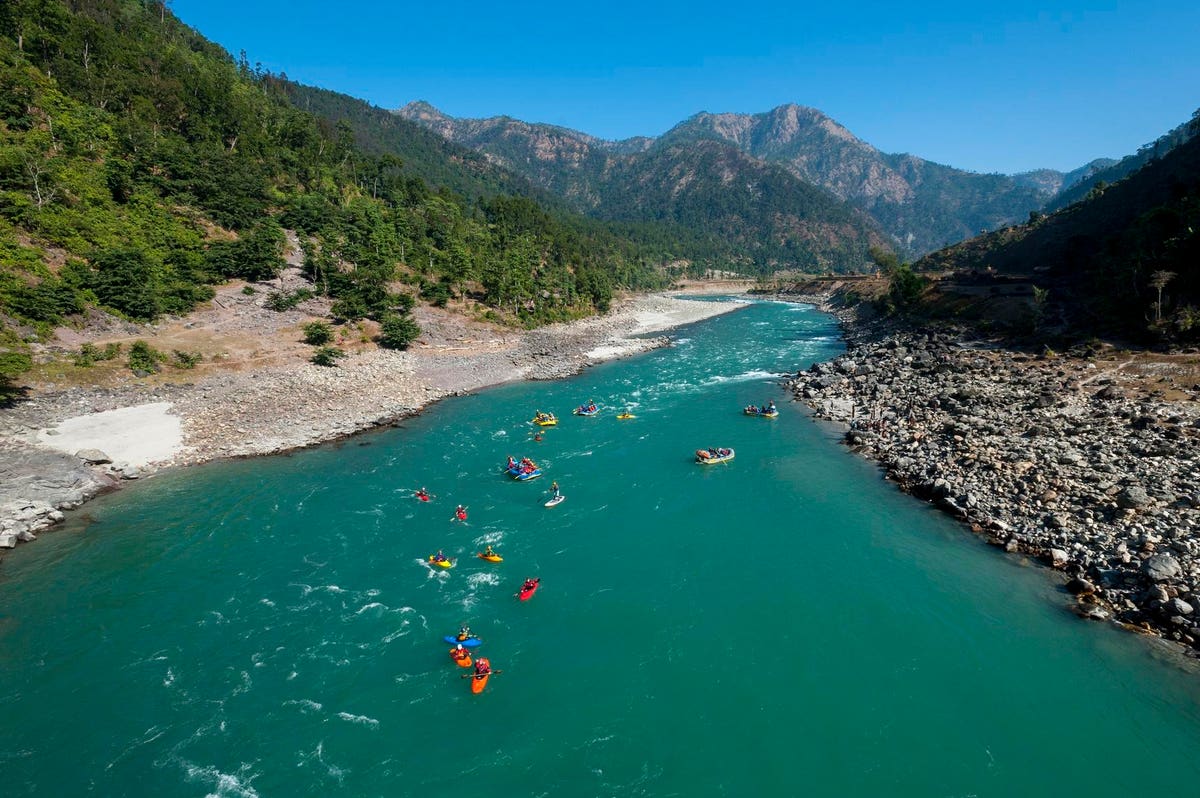Next week the Supreme Court of Nepal is hearing a case focused on whether to move forward with construction of hydropower dams on the Karnali River, the country’s last major river that remains undammed. The Court’s decision will go a long way toward resolving a seemingly irreconcilable conflict between two national objectives:
(1) Growing the Nepalese economy with the abundant low-carbon electricity generated from hydropower dams on its rivers;
(2) Maintaining healthy, natural rivers crucial to a range of cultural traditions and environmental resources – valuable in their own right, but also underpinning the significant economic potential of nature tourism.
Tough choice, right? Yes…except these are not irreconcilable aims.
While not easy, they can be reconciled if tackled at the right scale of geography. The Supreme Court decision could help move the debate away from the scale of conflict and toward the scale of solutions.
And at that latter scale, we’ll see that Nepal can have both abundant, low-carbon electricity and a healthy, free-flowing Karnali River.
To explain how, let’s start with the basics. At heart, this is a debate about how best to use the bounty produced from the combination of two key ingredients: elevation and water. The Karnali River basin has these ingredients in abundance, as does the entire country of Nepal.
Elevation and plentiful water are the fundamental components for hydropower and, in fact, Nepal generates more than 95% of its electricity from hydropower. The country is also planning to increase its generation capacity several times over in the next few decades and also looks to hydropower for nearly all of that expansion.
But elevation and abundant water are also primary ingredients for a number of other benefits. Rivers coursing off the Tibetan plateau carve dramatic canyons and have been viewed as holy entities for millennia. In the valleys below, these rivers replenish the groundwater under floodplains and they deliver sediment and nutrients to renew the productivity of lowland agriculture and fisheries. They form long networks of connected and complex channels for migratory fish and, when they surge out onto the plains of southern Nepal, they have the energy to create habitat features essential for wildlife, ranging from rhinos to river dolphins.
And thus, given all they create when mixed together, water and elevation are also key ingredients that underpin nature tourism: trekking, fishing, and rafting.
These diverse values—spanning hydropower to rhinos to rafting—that emerge from the alchemy of elevation and water can co-exist at the scale of a nation or even at the scale of a river basin. They have a harder time co-existing at the scale of a single river.
A river dammed for hydropower will generally become inaccessible to migratory fish. Hydropower built in mountain canyons generally creates considerable lengths of snaking reservoirs of still water or, conversely, stretches that are nearly de-watered (due to diversions). Either change, when superimposed on a stretch of whitewater rapids, is incompatible with world-class rafting.
These conflicting futures for the Karnali River are at the center of the current Supreme Court case. The Karnali is one of the longest free-flowing rivers in the Himalayas and the last of the big rivers in Nepal without dams. In its current form, the river offers some of the best rafting and kayaking in Asia and provides habitat for migratory fish, including the iconic megafish, the golden masheer. As it flows across lowland floodplains, the energetic Karnali carves out a complex mosaic of habitats, including islands of grassland and oxbow lakes that are essential for Greater one-horned rhinoceros. That lower reach is also home to critically endangered gharials and the largest population of river dolphins in Nepal.
These diverse environmental and cultural values have inspired government, communities, and organizations in the province that shares the river’s name to pursue a vision of a “Green Karnali.” Their plans propose a healthy Karnali River serving as the heart of regional tourism based on natural and cultural assets that are becoming increasingly rare across Asia, and the rest of the world.
Securing a Green Karnali could position the province to capture a larger share of the increasing global demand for tourism focused on natural and cultural resources. Karnali Province could follow in the footsteps of Costa Rica, which protected much of its forests and rivers and is now synonymous with nature-based tourism, representing nearly 13% of its Gross Domestic Product (pre-pandemic) and its largest source of foreign exchange.
But the Karnali also holds great potential for hydropower, with several large dams proposed for the mainstem river.
The opposing visions of a Green Karnali versus a harnessed Karnali now meet in the Supreme Court, as the Court hears a lawsuit brought by river advocates on the basis of Nepal’s constitutional guarantee of citizens’ rights to a healthy environment.
As noted above, when such conflicts collide in the arena of a single river, the contest becomes a zero-sum game. But if the arena can be expanded, say to the whole country, then a broader range of solutions emerges and legitimate win-win, balanced outcomes become possible.
I was part of a research team that explored this relationship between expanding geographic scale and expanding potential for achieving balanced solutions. We examined a broad range of options for Nepal to meet its future power demands with low-carbon, low-cost electricity and then asked, among these, are there some options that would allow Nepal to also maintain most of its current wealth of other values from rivers?
For this research, a group of Nepali experts defined a “High Conservation Value River” and then these rivers were mapped across the country. Not surprisingly, the Karnali emerged as one of the highest ranked rivers based on the experts’ criteria and the data compiled to evaluate the country’s river systems.
Then an energy research team from the University of California, Berkeley, developed a sophisticated model of the Nepali grid and simulated options for meeting projected electricity demand in 2040. The model selected among a pool of potential investments for generation, storage and transmission projects to build a functioning grid; the variable that changed among these options was cost.
Using this model, we could run simulations based on different policy choices, such as choices to avoid new hydropower dams in certain regions or on certain rivers. The model output would tell us how much these policy choices would affect the cost of Nepal’s future power system.
For example, we found that avoiding building hydropower dams in national parks (about one-quarter of Nepal’s proposed dams are within park boundaries) would only increase system costs by 2% (essentially an imperceptible rounding error given that energy development must deal with a range of cost uncertainties that are far greater than this difference).
Most relevant for the current Supreme Court case, we also examined the policy option of leaving the Karnali main stem undammed.
The result? Avoiding building hydropower dams on the main stem Karnali would have essentially zero influence on power system costs for Nepal. This outcome is possible because: (1) there is such a large pool of potential hydropower dams in Nepal that there are many other similar hydropower options on other rivers, including those that are already dammed as well as tributaries of the Karnali; and (2) wind and solar PV—now the cheapest forms of electricity generation in much of the world—are becoming increasingly cost competitive in Nepal.
This research provides a very optimistic insight for the people of Nepal. Their country can maintain the diverse values of the Karnali—with the river serving as the centerpiece of an economically valuable “Green Karnali” destination—and power its economy with low cost, low carbon electricity.
This national-scale approach to balancing hydropower with healthy rivers would allow Nepal to demonstrate a sustainable future, with an energy system that is both clean and green.
Read the full article here





